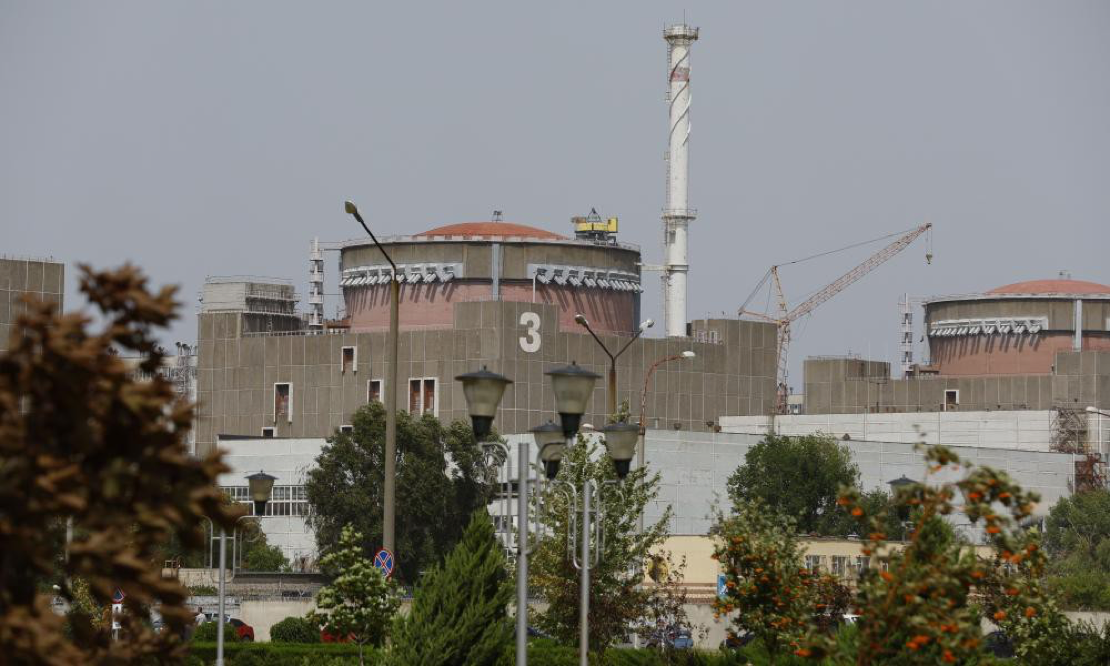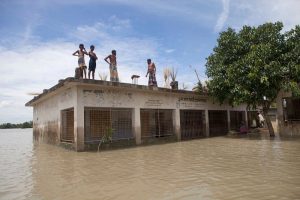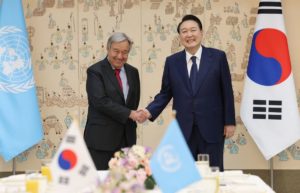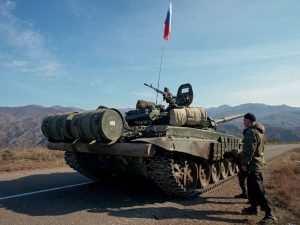Volodymyr Zelenskiy had warned of risks of ‘radiation disaster’ as supply disrupted by fighting at power plant
Ukraine has said it has managed to partly reconnect the Zaporizhzhia nuclear plant to its grid after the president, Volodymyr Zelenskiy, said it had narrowly avoided a “radiation disaster” when all lines to it were cut on Thursday.
The plant was captured in early May by Russian forces, who are reportedly storing equipment at Europe’s largest nuclear facility, but is still being run by Ukrainian technicians under the gaze of occupying forces.
Three of the four power connections the plant relies on to keep its reactors cool were previously cut during fighting, and on Thursday, fires around the plant that Zelenskiy blamed on Russian shelling brought down the fourth, disconnecting it for the first time in its history. Russia blamed Ukrainian shelling and on Friday said it had destroyed the gun responsible.
Zelenskiy said the disconnection had put “Ukraine and all Europeans in a situation one step away from a radiation disaster”.
Ukraine’s authorities said backup systems had kicked in to ensure the cooling and safety systems at the plant but as of Friday morning, Energoatom, Ukraine’s state nuclear agency, said efforts were still under way to link it back to the Ukrainian grid before announcing success in the early afternoon with the connection of one of its six reactors.
“Zaporizhzhia NPP nuclear power professionals are real heroes! They tirelessly and tightly hold the nuclear and radiation safety of Ukraine and the whole of Europe on their shoulders,” wrote Energoatom on its Telegram channel.
The situation however remains fragile as fighting continues around the plant.
Ukrainian authorities and international experts have consistently warned of the potential for nuclear catastrophe because of fighting around the facility, which sits close to the frontlines in the south. Disconnecting from the grid raises the risk of a catastrophic failure of the electricity-run cooling systems for its reactors and spent fuel rods.
A nuclear incident could have disastrous consequences for the immediate population and clouds of radiation could travel across Europe.
A mission from the International Atomic Energy Agency is scheduled to visit the plant next week to monitor the situation and take protective measures, said Lana Zerkal, an adviser to Ukraine’s energy minister, on Ukraine’s Radio NV.
The French president, Emmanuel Macron, said he had received assurances from Zelenskiy and Russia’s president, Vladimir Putin, that the mission would be allowed to reach the plant safely. But Zerkal said she remained sceptical that the mission would reach it.
“All the logistical routes are now being worked out,” Zerkal said. “Despite the fact that the Russians agreed that the mission will go through Ukrainian territory, they are artificially creating all the conditions so that the mission does not reach the object given the situation around [the plant].”
Civilians across Ukraine’s south who rely on the plant for electricity, including those in the occupied territories, have experienced power outages with the disconnection of the plant. More that 18,000 people in 72 settlements in the Zaporizhzhia region were without power as on Friday, the regional administration said.
People living in occupied areas already face severe problems accessing medicine, basic goods, information and freedom of movement, and those who disagree politically face repressive measures from the new administration. Thousands living along the contact line have been caught up in shelling.
Ukraine and Russia have traded blame over whose shells have damaged the power plant and the surrounding area. The Wall Street Journal reported that Russia was using the plant as a military base and Washington’s Institute for the Study of War said that Russia had failed to present evidence that the shelling was caused by Ukraine, despite the fact they controlled the territory.
During the outage, the plant still received supplies of electricity from one remaining backup line connected to the nearby conventional power plant, Energoatom said. There were three of these lines before the war, but two have been cut.
If all external connections go down, the plant must rely on diesel-fuelled generators for power. If these break down, engineers only have 90 minutes to stave off dangerous overheating.
Russian and Ukrainian forces have reached a relative impasse, with no significant territorial gains or losses in the last two months. This week, Putin signed a decree to increase the size of the Russian army by 137,000 men, and the UK’s Ministry of Defence said on Friday it believed he had fired six generals for advancing too slowly.
Also on Friday, Ukraine said it would expand the number of districts on the frontline where civilian evacuations would be mandatory, as those areas could be occupied and face central heating problems this winter.
Russia’s takeover of the plant is the latest in a long list of challenges Russia and its occupying authorities are facing in running newly conquered territories.
Ukrainians continue to use the western-supplied long-range missiles to target infrastructure within enemy lines. Explosions could be heard in occupied Kherson on Friday afternoon as Ukraine’s southern command said it had successfully disabled the Dariiv Bridge to the north of the city. Russia’s RIA news agency reported that the Russian air defence systems had been activated. It is not clear if the two incidents were connected.
Video footage released on Thursday show the occupying authorities are attempting to build a pontoon bridge across the river to replace the Antonovskiy Bridge struck by Ukrainian forces last month, rendering it unusable.
Russian authorities will hold referendums in newly occupied parts of southern Ukraine, although it appears they will take different forms and may be conducted on different dates.
In the city of Melitopol in the occupied-Zaporizhzhia region, pollsters will go door-to-door instead of voters attending polling stations, according to its mayor-in-exile, Ivan Fedorov, citing sources on the ground.
Authorities are trying to operate while apparently being attacked from within. RIA reported that a bomb exploded in the building from where the referendum was being planned and Russian passports were issued.
In the occupied southern city of Berdiansk, the deputy head of the traffic police was killed on Friday by an explosion, Russia’s state news agency, Tass, reported. On Wednesday, Ivan Sushko, the head of another occupied city nearby, was killed by a car bomb, occupying authorities reported on Telegram.
Their deaths are the latest in a string of assassinations that have targeted members of the occupying authorities. On 23 August, Ihor Telehin, the deputy head of the internal policy department for the occupied Kherson region, was also targeted with a bomb but survived, according to Tass.




